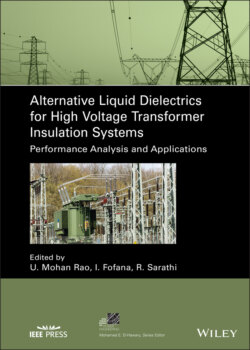Читать книгу Alternative Liquid Dielectrics for High Voltage Transformer Insulation Systems - Группа авторов - Страница 59
2.6 Dissolved Gas Analysis in Natural Esters
ОглавлениеOccurrence of faults in the electrical network is very much likely, but proper monitoring can help avert any catastrophic incidence. The two main categories of faults arising in the transformers are thermal and electrical. These faults lead to breakdown of insulation, and release gases in the interior of the transformer, which are detrimental to the overall functioning of the apparatus. Thus, it is very much important to measure the health of the transformer at fixed durations. DGA is an indispensable method to assess the condition of a transformer to gauge the severity of the incipient faults. The key gases developing in the transformer as a result of fault and aging are: (i) hydrogen and hydrocarbons – hydrogen (H2), ethane (C2H6), methane (CH4), ethylene (C2H4), acetylene (C2H2), (ii) Carbon oxides – carbon monoxide (CO) and carbon dioxide (CO2), and (iii) propylene (C3H6) and propane (C3H8). The increase in temperature leads to the evolution of these gases and with progressing time, the concentration of these gases change. Detecting the individual concentration and applying the various standard methods can help identify the incipient faults that might occur inside the transformer.
The standard IEEE C57‐104 is dedicated to MO whereas the standard IEEE C57‐155 is about Interpretation of Gases Generated in Natural Ester and Synthetic Ester‐Immersed Transformers. As all the gas ratio techniques are elaborated in IEEE C57‐104, it is used for analysis. The Duval Triangle method is mentioned as per IEEE C57‐155 and it is used with regards to the stray gassing phenomenon in natural esters under the effect of the thermal stress.
